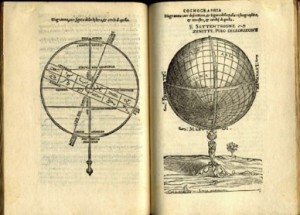The Great Year, refers to the slow precession of the equinox through the twelve houses of the ancient zodiac, a period that takes between 24,000 to 26,000 years.
Two questions: 1) what actually causes the precession of the equinoxes and 2) when was the precession first discovered? There are several views on this. All fascinating.
Precession of the equinoxes, motion of the equinoxes along the ecliptic (the plane of Earth’s orbit) caused by the cyclic precession of Earth’s axis of rotation.
In compiling his famous star catalog (completed in 129 bce), the Greek astronomer Hipparchus noticed that the positions of the stars were shifted in a systematic way from earlier Babylonian (Chaldean) measures. This indicated that it was not the stars that were moving but rather the observing platform—Earth. Such a motion is called precession and consists of a cyclic wobbling in the orientation of Earth’s axis of rotation with a period of 25,772 years. Precession was the third-discovered motion of Earth, after the far more obvious daily rotation and annual revolution. Precession is caused by the gravitational influence of the Sun and the Moon acting on Earth’s equatorial bulge. To a much lesser  extent, the planets exert influence as well.
extent, the planets exert influence as well.
Earth’s precession was historically called the precession of the equinoxes, because the equinoxes moved westward along the ecliptic relative to the fixed stars, opposite to the yearly motion of the Sun along the ecliptic. This term is still used in non-technical discussions, that is, when detailed mathematics are absent. Historically,[2] Hipparchus has been credited with discovering the precession of the equinoxes, although evidence from cuneiform tablets suggest that his statements and mathematics relied heavily on Babylonian astronomical materials that had existed for many centuries prior. The exact dates of his life are not known, but astronomical observations attributed to him by Ptolemy date from 147 BC to 127 BC.
The fundamental question seems to be how long ago was this discovered.
Theory that the precession is caused by the wobble of the earth on its axis like a top.
Related pages:








